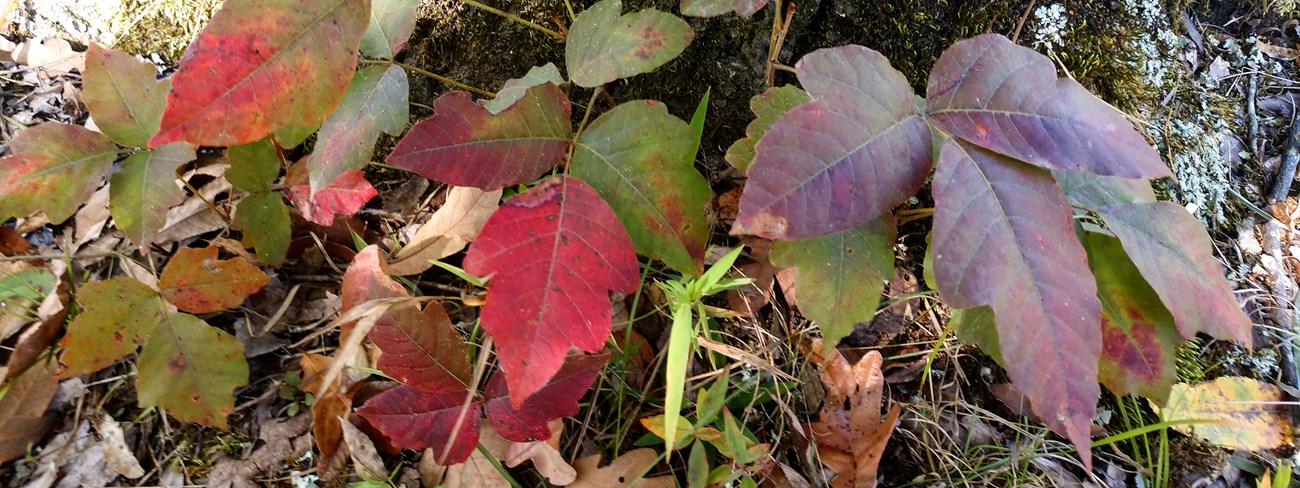
NPS / Matt Switzer "Leaves of three, let it be!"Poison ivy can be found in all areas of Little River Canyon National Preserve. This versatile plant grows as a climbing vine, a shrub, and a ground cover, and from full sun to full shade. Leaves can be a shiny or dull green color, turning to reds, yellows, and oranges in the fall. Poison ivy produces an oily skin irritant that causes an itching rash from all parts of the plant - you can still get a rash from poison ivy even in the winter when the plant has no leaves! Some people may have a very serious reaction to poison ivy, requiring medical treatment. The best prevention is to avoid contact. If exposed, wash the affected area with soap and cold water (hot water opens pores in your skin and can cause further spreading!) as soon as possible. Safety Tips:
|
Last updated: July 31, 2022
